Fantastic Four: 13 Reasons They Stand Out From Other Comics: “We’ve changed! We’re more than just human!”
Celebrating the anniversary of Marvel’s First Family—which historically broke new ground for comic books.
“Together we have more power than any humans have ever possessed!”
Today the Marvel Comics series Fantastic Four is celebrating 62 years since its debut. In honor of the series—and its impact on the entire comic book industry—Monster Complex is going to go through a list of what makes them stand out in the comics world.
The team debuted in Fantastic Four #1. Although the cover date is November 1961, that issue actually hit stores on August 8, 1961. Created by artist/co-plotter Jack Kirby and editor/co-scripter Stan Lee, the Fantastic Four comic book series starred a team that gained its superpowers from cosmic rays during a rocket mission in outer space.
Welcoming a new level of realism in comics, the four used science and their various backgrounds to defend the world against perilous threats. The members of the FF are:
Mister Fantastic (Reed Richards) is a scientist and leader of the group. He can also stretch his body into amazing shapes, expanding and stretching in bizarre ways. We saw these kinds of powers treated in a monsterly way in the X-Files episodes “Squeeze” (1.3) and “Tooms” (1.21).
Invisible Woman (Susan Storm-Richards) can make herself invisible (a la the Universal Monsters 1940 movie Invisible Woman) and shoot invisible force fields.
Human Torch (Johnny Storm) can burst into flame and also fly. His powers are a reworking of an earlier comics character (with the same hero name), plus kind of like what happens in the 1941 Lon Chaney Jr. movie Man-Made Monster.
The Thing (Ben Grimm) is huge-sized, super-strong, and covered with brick-like skin. He has super strength, resilience, and stamina.
Showing up in other media, the Fantastic Four have been adapted into video games, TV shows, and movies.
In our list below, we go over several factors that make the FF stand out from other comic books.
Monster Complex uses Amazon affiliate links.
Fantastic Four: 13 Reasons To Celebrate Its 62 Years: “We’ve changed! We’re more than just human!”
#1 The FF Are The Beginning of the Marvel Age
OK, there are several factors to remember discussing the “beginning” of the “Marvel Universe.” But it’s clear that Fantastic Four #1 is the anchor to which everything else at Marvel is connected.
The actual company had been around since the 1930s, and even kicked off with a comic book titled Marvel Comics. And that series even introduced Namor the Sub-Mariner and the original version of the Human Torch (among others).
But a lot of stuff happened in the 1930s through to the 1950s. By 1961, the company—which had gone through multiple name changes—had stopped making superhero comic books. Struggling to stay in business, it was just doing comics with romances or monsters or lots of other stuff.
Then the publisher came to longtime employee Stan Lee. He said that rival comic book company DC Comics was making lots of money with their new comic book Justice League of America. He told Lee to copy it.
The way Lee retold the story, by that point he was really tired of comics. He was thinking of quitting and going into something else.
But Lee’s wife told him to at least try this new super team book. Just make it like he wanted. And if it failed, he could use that as his excuse to move on.
So Lee connected with longtime comics creator Jack Kirby and the two made what—at that time in history—was an extremely fresh take on a superhero comic book.
(We’ll be going over many of those factors below.)
Other publishers were putting out comics that only touched on one or two genres at a time. But with the Fantastic Four, Lee and Kirby combined way more than that.
Starting with the base idea behind Kirby’s DC Comics series Challengers of the Unknown, they gave the members of the group superpowers—but even more than that, they included lots of other stuff, too. Monsters. Romance. Adventures. Mysteries. Exploration.
A big success right out of the gate, Fantastic Four gave Lee and Kirby the freedom to move even further away from what everyone else was doing. The FF was literally the start of what we now see as the Marvel Universe.
An while even Fantastic Four #1 was not labeled as being published by “Marvel Comics,” the company soon did take on that corporate name. And considered Fantastic Four #1 to be the launching point for that brand.
Over the next few years, Lee and Kirby and artist Steve Ditko would also launch the Avengers, X-Men, Spider-Man, Black Panther, Scarlet Witch, Doctor Strange, Hawkeye, Black Widow, Daredevil, the Hulk, Iron Man, Thor, Ant-Man, the Wasp, and a bunch more.
And the big deal about the “Marvel Universe” is that pretty much every Marvel Comics character lives in the same world. While that’s a fairly normal thing to see today—everyone made by the same company live in the same world—Marvel were the ones who made it “normal.”
And all those Marvel Comics comics were follow-ups to the Fantastic Four.
Easiest options to read the first issue(s) of Fantastic Four
Fantastic Four #1 (original series)
Fantastic Four Omnibus Vol. 1 (collects Fantastic Four original series #1-30 and Annual #1)
Fantastic Four Epic Collection: The World's Greatest Comic Magazine (collects Fantastic Four original series #1-18)
Fantastic Four Masterworks Vol. 1 (collects Fantastic Four original series #1-10)
Related link: Douglas Wolk Q&A: How Marvel Comics Are All One Big Story
#2 The FF Are Monsters
One of the most prominent values of the Fantastic Four is that they were so different from other “super hero” characters from other comics. What we see today is so dependent on their influence, you really have to study the history of comics to recognize how shocking they were in 1961.
And one of those characteristics that were so shocking in 1961 was the idea that they were monsters. All four of them.
In case you don’t know the origin story, they were four astronauts in an experimental flight in outer space. They were hit by cosmic rays and then the ship crashed back on Earth. Digging themselves out of the wreckage, all four of them discovered that they had been transformed by the radiation.
Johnny Storm burst into flames—and found he could maintain that. Sue Storm discovered that she was turning invisible. Reed Richards discovered that he had weird stretching abilities. Ben Grimm was weighted down by a sudden transformation into what looked (eventually) like a walking pile of rocks.
Yes, one of the long running storylines for the series is that Ben Grimm—the orange-rock guy—is tormented because he looks like a monster all the time. (Well, most of the time.) He can’t just hide in a crowd.
But when you go back and re-read the first issues of the series, you see how all four of them were somewhat traumatized by what had happened to them. They are all monsters—transformed by cosmic rays—who try to live normal lives but struggle with how normal people perceive them. There are members of the public who consider them freaks to be avoided.
Up to that point in other comics, gaining powers were considered a bonus. It was a happy thing.
The fact that the members of the FF were victims who had to work through their traumas was a huge difference from what other comics were doing.
Related link: 25 Monsters Who Are Marvel Superheroes
#3 The FF Are Family
Most teams of superheroes are just a club or a business. But the Fantastic Four are first and foremost a family.
Sue Storm (Invisible Girl AKA Invisible Woman) and Reed Richards (Mr. Fantastic) started out the series with romantic interests which eventually led to their marriage. Johnny Storm (Human Torch) is Sue’s brother. Ben Grimm (The Thing) is a longtime friend of Reed’s (going back to college and later serving together in the military), who has bonded with them all as close as any brother.
Over the years, the group has also grown with more family members—including the Richards’ children Franklin and Valeria, as well as the women in Ben’s and Johnny’s various relationships.
Yes, the members of the FF bicker. Sure, over the decades, the group has splintered now and then. Sometimes the regular members have gone this way or that, and been replaced by temps.
But time and again, we’ve seen that the series bring us back to the main cast. It’s clear that the “Fantastic Four” are (usually) four specific people. And when things goes bad, they’re going to protect the others.
Because the Fantastic Four is a family.
Related link: 14 Monster Families from Fantastic Four, Charmed, Hotel Transylvania, The Munsters, more
#4 The FF Are Explorers
In the world of comics, most teams of superheroes serve as something like officers or soldiers. They are often funded by governments or businesses or schools.
But over the years, the primary goal for the Fantastic Four is for them to be scientists. They explore new places. They build new inventions.
Sure, the FF do end up fighting bad people now and again—but that’s never been their purpose. They are driven by a love of knowledge and science.
While other superheroes tend to focus their attention on particular territories (ranging from the neighborhood to the whole world), the Fantastic Four cover way more places. Because of the FF, the Marvel Universe knows about more destinations—whether we’re talking about outer space or about negative space. (There has also been some time travel involved.)
#5 The FF Are Gatekeepers
Remember how we were talking about the Marvel Universe? You know, how it’s all connected as one big place?
Part of that is because the Fantastic Four comic book series served as the entry point for lots of Marvel characters. This includes the likes of Latverian monarch Doctor Doom, the awe-inspiring Inhumans, cosmic threat Galactus, temporal problem Kang the Conquerer, and more.
(We talk about some more examples below.)
#6 The FF Are Business
As we mentioned before, many superhero teams work for others—including governments, businesses, and schools. That also means they are funded by these organizations.
But the Fantastic Four actually became their own business. It helps that Reed Richards isn’t just a superhero who is leader of the FF, he’s also inventing stuff they can sell.
Of course, as a family business, that means the others are now and then called upon to do their part to make it work as a business.
#7 The FF Are Famous
For decades, one of the key factors in a superhero comic book had to do with keeping a secret identity and then changing clothes to do your superhero stuff. Wonder Woman was sometimes Diana Prince. Superman was sometimes Clark Kent. Batman was sometimes Bruce Wayne. Etc.
But from the beginning, the members of the Fantastic Four have been pretty open about their real names. They are, in fact, celebrities.
(Granted, the 1960s also-running solo adventures of the Human Torch in Strange Tales while he was in college did involve a “secret identity,” which seemed like a weird contradiction with his FF adventures. But after a while, one of the writers explained he was doing that at school specifically to avoid too much unwanted attention. By that point, some characters in the solo stories would mention it was weird he was trying to hide his identity, since everyone knew who he was.)
From Strange Tales #106
#8 The FF Are Real World(ish)
When I was a kid growing up in the St. Louis market, I was thrilled to find out THIS happened…
In the history of comic books, most superheroes have been hanging out in cities that probably had made-up names. Metropolis. Gotham City.
But since early in the series, the Fantastic Four have often been in real places. Maybe the FF aren’t the only comic book characters in a real place now—but in the early days, it was refreshing that real locations were sometimes a major part of the story.
In fact, the FF have for years been living in New York City—the same city where the comic book is actually made. (There was that time Lee and Kirby were working on the FF comic when Doctor Doom showed up in the office.)
#9 The FF Are Hosts
In addition to introducing new characters to the Marvel Universe, the Fantastic Four comic also welcomed even more characters who had appeared somewhere else first. Like The Hulk. The Avengers. Daredevil. The X-Men. Doctor Strange. Etc.
Other examples include when they invite (or even hire) someone to fill in for a missing member. Characters on that list have included Luke Cage, She-Hulk, Spider-Man, and more.
And then you had Fantastic Four Annual #3 in 1965. Sharing the wedding of Reed and Sue, it feels like pretty much all of Marvel Comics showed up—heroes and bad guys.
In fact, even creators Stan Lee and Jack Kirby showed up for that. (But were stopped at the door.)
#10 The FF Brought Back Namor
Although the Marvel Age began in the 1960s, the company that eventually became Marvel did publish some superhero comics going all the way back to the 1930s and 1940s. And—it’s worth pointing out—those comics included Captain America, the original Human Torch…and the surprisingly complicated character of Namor the Sub-Mariner.
Who was sometimes a hero. And sometimes an anti-hero.
As an outsider who came from beneath the ocean, Namor had a complicated relationship with people on land. And he went through lots of those stories—sometimes as the helper, sometimes as the problem—during the 1940s and 1950s.
But following World War 2, the whole genre of “superheroes” started to fall off. And one of the cancelations during that period was Namor’s comic.
Well, with the launch of Marvel Comics in the 1960s, Lee and Kirby were finding ways to bring back some of the more important old characters. One of the first re-introductions was when they brought back Sub-Mariner in Fantastic Four #4 (1962).
And given that he was complicated, the storytellers totally went with that. Was Namor a hero? Was he a villain? The answer was both “Yes” and “No.” And a little bit of “Ask me again later.”
Even more complicated was the fact that—given that at that time, Sue was still a single woman—there were some interesting romance complications with the love triangle involving Sue, Namor, and Reed.
The Sub-Mariner has actually made several guest appearances in the Fantastic Four comic over the years.
#11 The FF Introduced Black Panther
Another important character introduced by the FF is Black Panther, who made his debut in Fantastic Four #52 (1966). The king of the (fictional) African nation of Wakanda, T’Challa AKA Black Panther was an expert in Wakandan traditions, science, physical combat, with wealth and advanced Wakandan technology.
Black Panther went on to have numerous appearances in Marvel Comics, including some series of his own. He has also been adapted in other media, including TV shows, movies, video games, and more.
Related links:
#12 The FF Introduced Silver Surfer
Another case of someone important who made their debut with the FF is the Silver Surfer. In fact, although most of the work by Lee and Kirby was a coordinated bit of back-and-forth storytelling, an interesting fact about Silver Surfer is that Kirby drew him into the story before Lee even knew who he was.
It was like this: Lee and Kirby were working on the first story that involved Galactus. And when Kirby brought in the pages he drew for that story, in one of the panels was this unknown character.
And Lee was all, “Who is that?”
Turns out that Kirby thought that a giant cosmic being like Galactus should have a representative who appears ahead of him. Which is why he was introduced in Fantastic Four #48 (1966).
A humanoid alien with metallic skin serving as the herald of Galactus, Silver Surfer had been granted the Power Cosmic. Flying through space on his cosmic surfboard, Silver Surfer was exploring the cosmos searching for planets for Galactus to consume.
But when he led Galactus to Earth, Silver Surfer met the Fantastic Four. And was inspired to help save the Earth from his boss.
Silver Surfer has since been adapted into other media, with appearances on TV, in movies, and in video games.
#13 The FF Has Been Made By Several Great Creative Teams
Over the more than 60 years of history with the Fantastic Four comic book series, there have been many different writers and artists creating new stories about the family. Right now, I’m actually reading the entire series—in order—from #1 all the way to issue #700 (and beyond).
Below is a list of just some of the creative teams that are recommended by readers. I haven’t personally read all of them yet. (Like I said—I’m reading these in order.)
But some of these writers and artists I have enjoyed quite a bit—and I’m looking forward to reading the rest soon…
More from Monster Complex
Kong and Godzilla fight Justice League in upcoming crossover saga
More Werewolf By Night And Elsa Bloodstone from Marvel Comics this fall
Gold Key Comics is coming back—and they’re bringing Boris Karloff
Marvel Comics honors George Perez’s legacy with variant covers featuring his iconic artwork
Ms. Marvel “dies,” joins exclusive club with Mr. Spock, Sherlock, Batman, Spider-Man, etc
Multiverse Fiction: 22 Diverting Examples of Parallel Universe Stories
Moon Girl and Devil Dinosaur: 13 Facts Behind the Disney+ Series
Related links from the Internet
10 Best Fantastic Four Unresolved Plots In Marvel Comics (CBR)
How The Fantastic Four Could Be The Next Big MCU Crossover Film (MovieWeb)
10 Ways The Fantastic Four Are Different From Other Superheroes (Screen Rant)
Kevin Feige Teases The Importance Of The Fantastic Four In The MCU (Cinemablend)
COMIC BOOKS: Fantastic Four: Whatever Happened to the Fantastic Four? (The Tifton Gazette)
The MCU Fantastic Four reboot needs to nail these five things from comics to be perfect (GamesRadar)
How one Northern California city convinced Stan Lee to move the home of the Fantastic Four (FOX40)
All 4 Fantastic Four movies ranked from worst to best (Bam Smack Pow)
Fantastic Four #700 Cover Features 700 Marvel Characters (ComicBook.com)
How the 1994 Fantastic Four Movie Lived On (Despite Marvel’s Plan to Kill It) (Den of Geek)
Fantastic Four: Alex Ross’ Full Circle shows why Marvel movies can’t get the superheroes right. (Slate Magazine)
Worst Marvel Movies of All Time, Ranked (Mary Sue)
Celebrate Marvel’s First Family with FANTASTIC FOUR: THE FIRST 60 YEARS (Marvel.com)
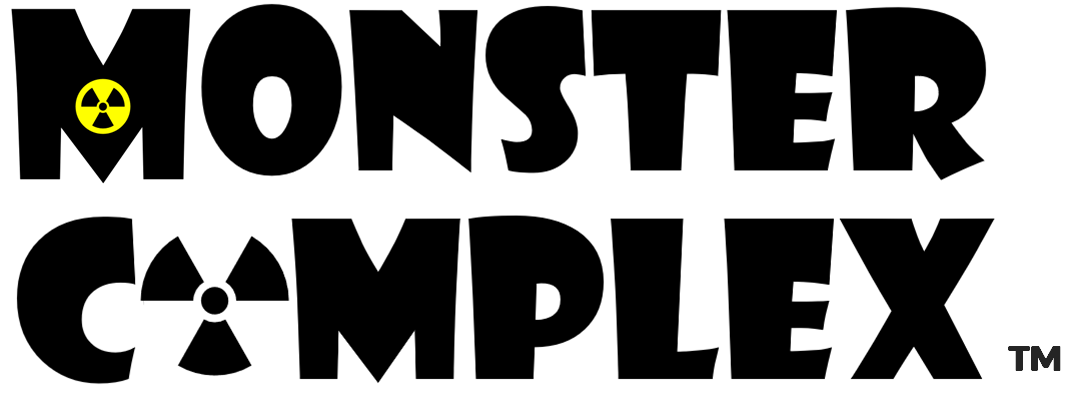





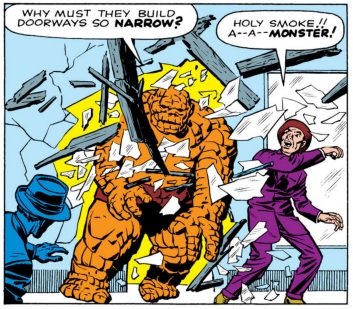
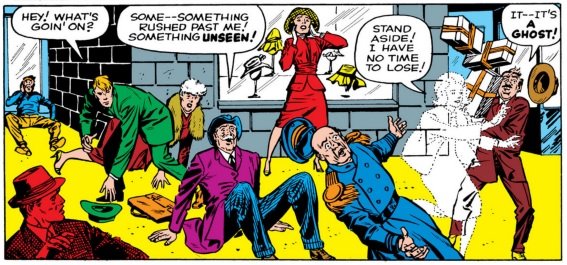
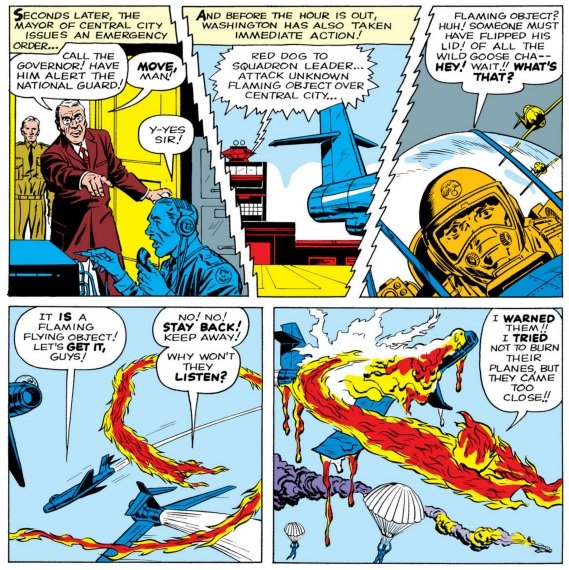
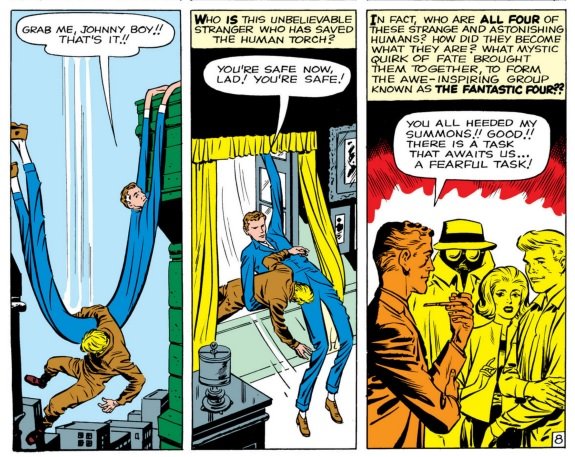











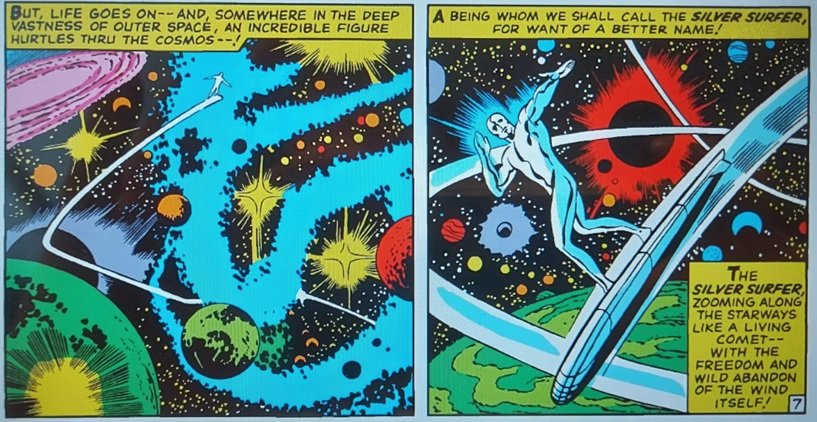














Godzilla’s first movie came out in 1954. In the years since, there have been dozens more Godzilla movies—with all sorts of angles and different approaches. Which do YOU like best?